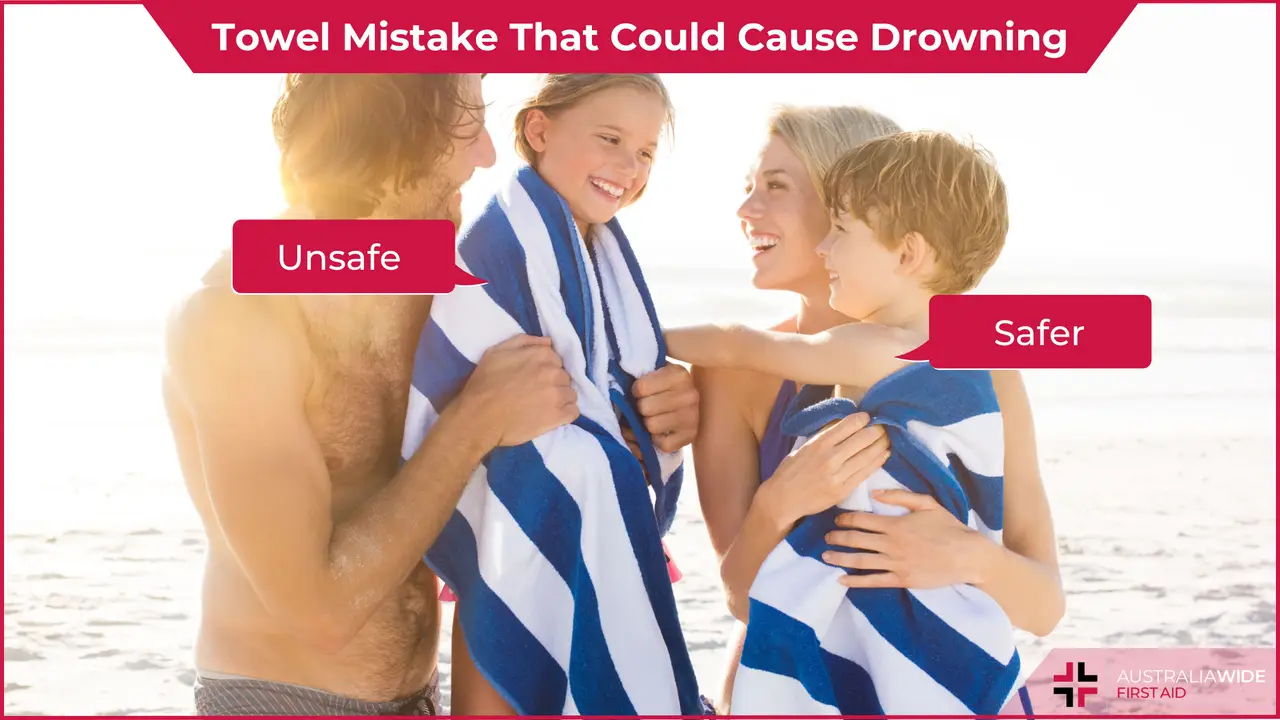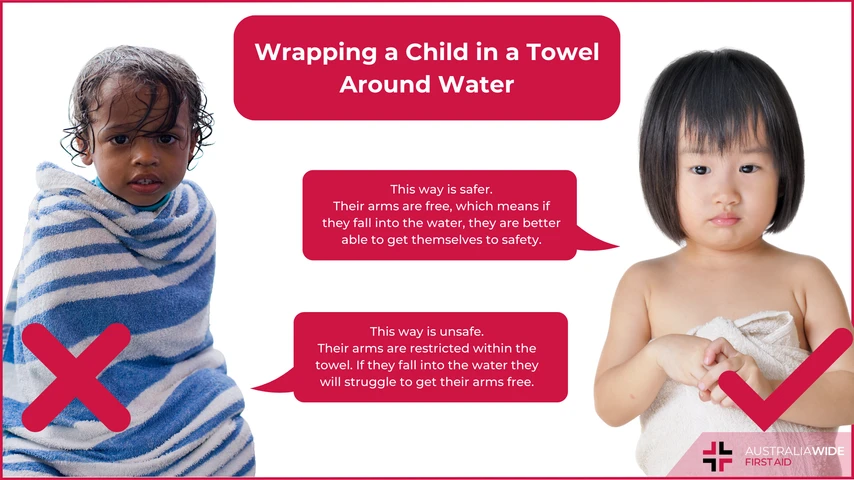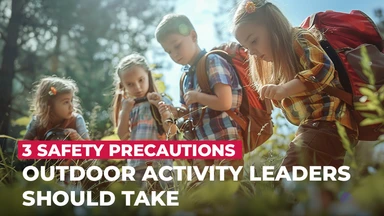Towel Mistake That Could Cause Drowning


With the weather warming up, many people are heading back to the water. Whether it’s your backyard pool, a public pool, lake, river, or ocean, swimming is a fantastic form of relaxation, play, and exercise.
There is, however, one common thing that many people do which is putting your child’s life in danger.
When your child hops out of the water, often our first instinct is to wrap a towel around their shoulders. This is of course to help them dry and keep them warm.
In doing so, the child’s life is in danger.
If the child were to fall in the water while their arms were wrapped underneath a towel, their risk of drowning significantly increases.
The wet towel will restrict the movement of their arms and likely get in their face, restricting their vision.
Their first instinct will be to try and wriggle out of the towel. But because of the weight of the fabric, and depending how tightly wrapped they are, this could prove difficult if not impossible.
In the precious moments it could take to untangle themselves, they will sink further into the water. If they are unable to remove the towel from their arms, they are likely to panic.
Panicking, sinking deeper into the water, and not having free use of their arms is a recipe for tragedy.

Rather than wrapping a towel around a child’s shoulders, there is a much safer option.
First, dry their arms and shoulders thoroughly. Dry their hair and face as well, especially if dripping hair is likely to cause upset.
Then, wrap the towel around their body underneath their arms. You could tuck it in to keep it in place, or they can hold it in place themselves.
By wrapping it in this way, they will still have free use of their arms to get themselves back to the surface if they did fall into the water.
The Royal Life Saving Summer Drowning Report has highlighted how significant the drowning death toll is.
Between 1 December 2022 and 28 February 2023, 90 people died as a result of drowning. 54 of those occurred in coastal areas, with over 6,000 rescues by surf lifesaving personnel occurring.
9 of those 90 deaths were the result of a rescue attempt gone wrong.
Every year, an average of 274 people fatally drown, and a further 555 experience non-fatal drowning requiring hospitalisation. The number of non-hospitalisations for drowning incidences is unrecorded, as the majority are not reported.
According to the 10-year analysis of drowning in children 5-14 years in Australia, 14 children fatally drowned as a result of a fall into water.
That is 14 children too many.
Drowning occurs when water enters the respiratory system through the nose and mouth. When the water then enters the lungs, it stops the exchange of oxygen into your blood stream.
Without this exchange of oxygen, your brain will quickly slip into unconsciousness. Starved of oxygen, your body will begin to shut down, and brain damage will occur.
Drowning can occur in as little as a few seconds, and can progress to fatal drowning within minutes.
Drowning is a silent killer.
It is very unlikely that a person who is drowning will thrash around yelling, as they do on screen.
Far more likely they will be so focussed on their own survival that they will not be able to voice a sound – this is known as the Instinctive Drowning Response. Movements such as waving, while logical, may not come to mind if a person is drowning.
If a person is drowning, there will likely be a short struggle with the water followed by:
If a person is trapped under the water, such as a child wrapped in a towel, you may not notice anything on the surface other than perhaps the water rippling.
There are a number of ways you can help keep children safe in, on, and around water:
Water safety is a concept that should never be overlooked, no matter how comfortable or confident you or your child feel.
Many factors can influence the likelihood of accidental drowning occurring. Ensuring you know how to safely wrap a towel around your child reduces one of them.
Having up-to-date First Aid and CPR skills and knowledge is another – one that can save lives should you come across a drowning person. We have CPR and First Aid courses available in over 75 locations Australia-wide – find one close to you when it’s time to upskill!

October 1, 2024
Almost every job involves using the body to carry out some type of manual task. Some tasks may be hazardous, causing injuries such as musculoskeletal disorders (MSDs). Knowing how to manage them is a legal responsibility of all workplaces.

January 10, 2024
In Australia, workplace safety is a top priority, and First Aid plays a crucial role in ensuring the well-being of employees. Workplaces are expected to adhere to specific regulations and guidelines outlined by Safe Work Australia. How does your workplace stack up?

November 24, 2023
No matter how experienced you are as an outdoor activity leader, there are some things you should always do to keep your group safe. Nature can be unpredictable, and so it’s best to be prepared.